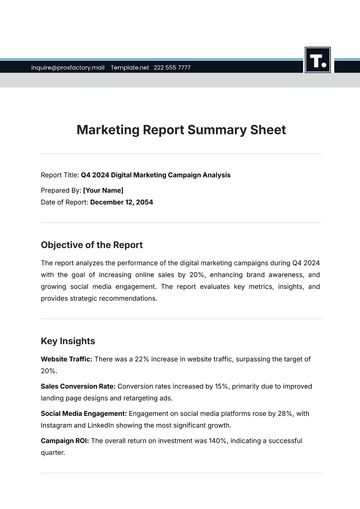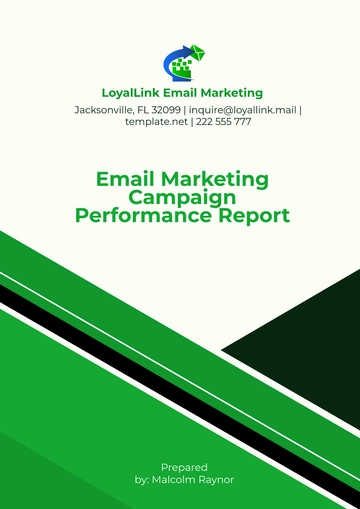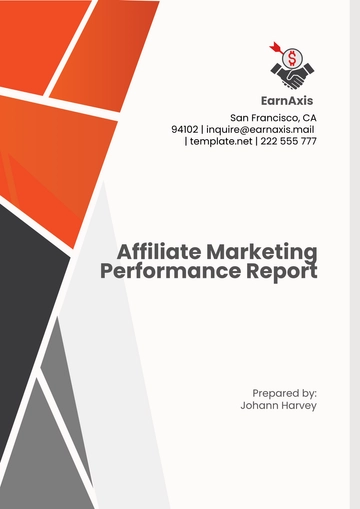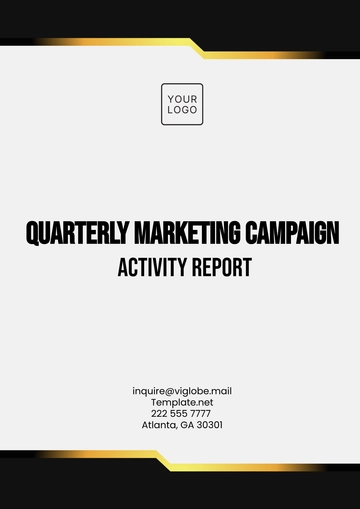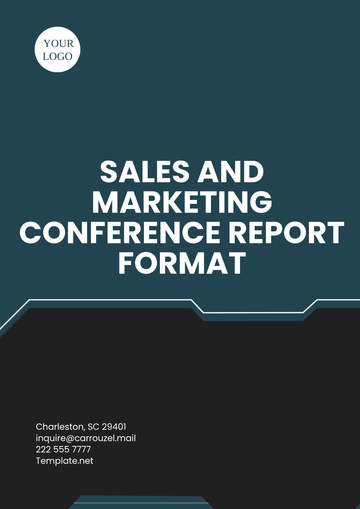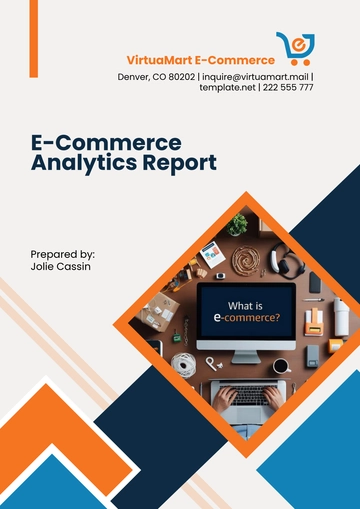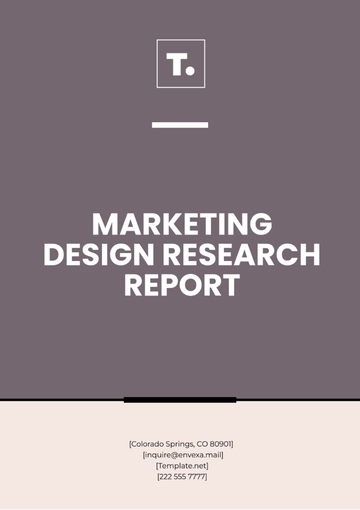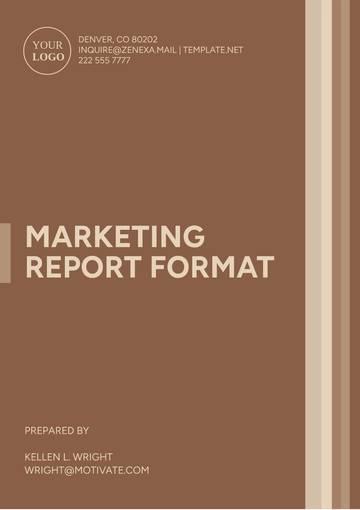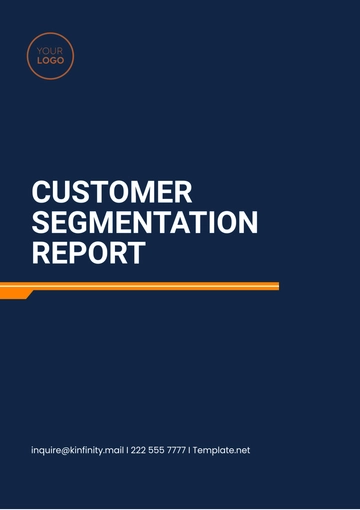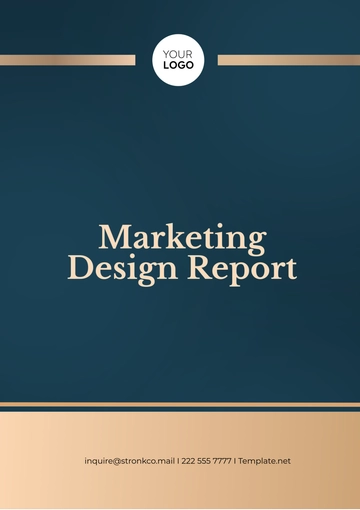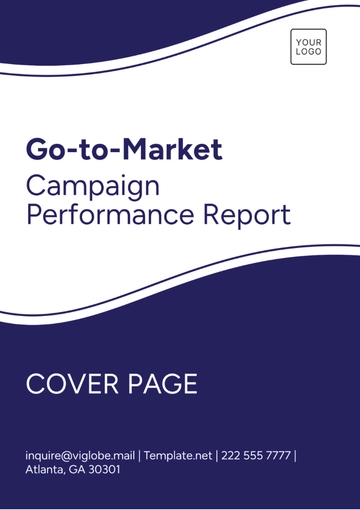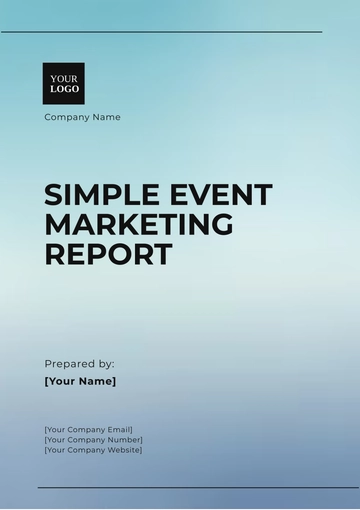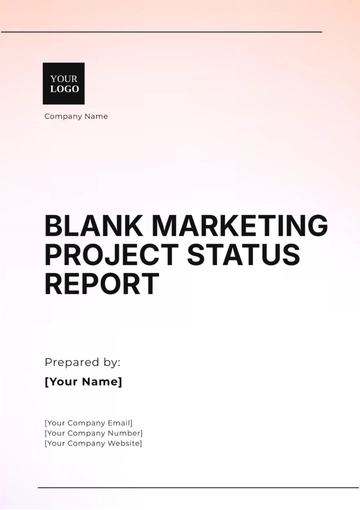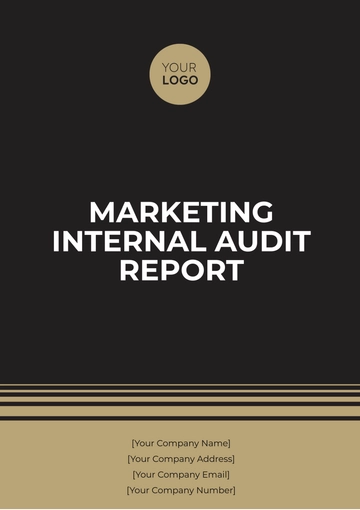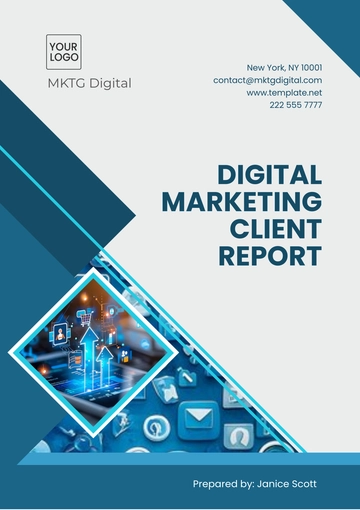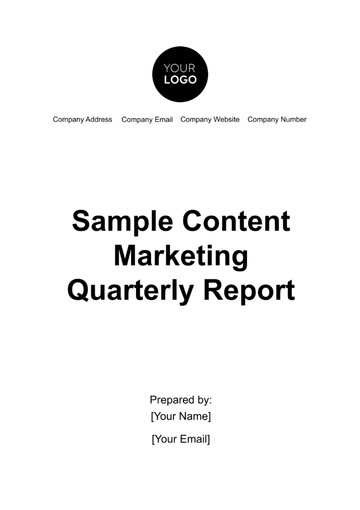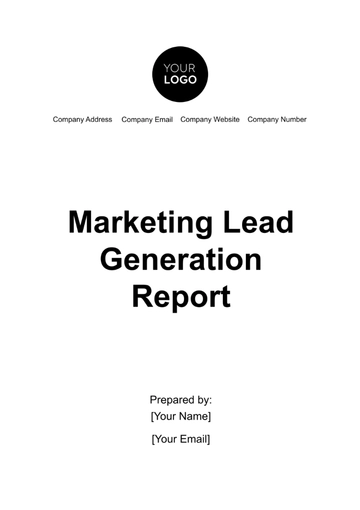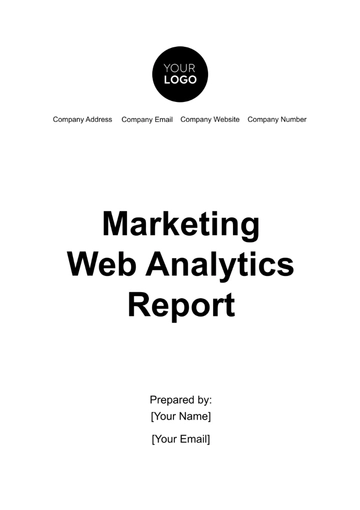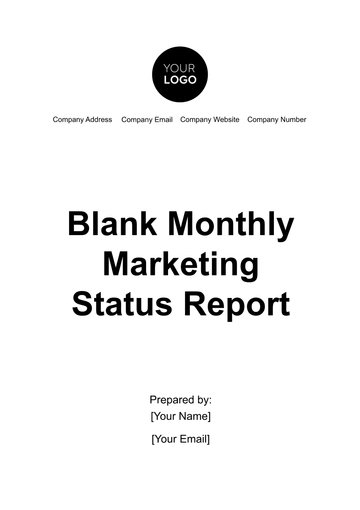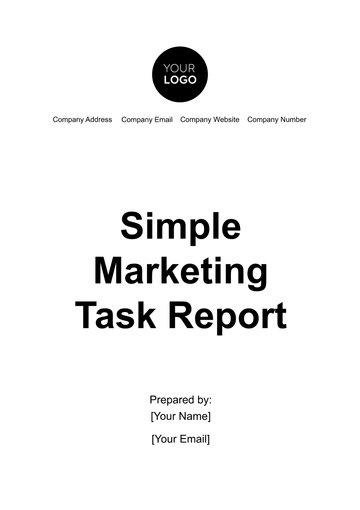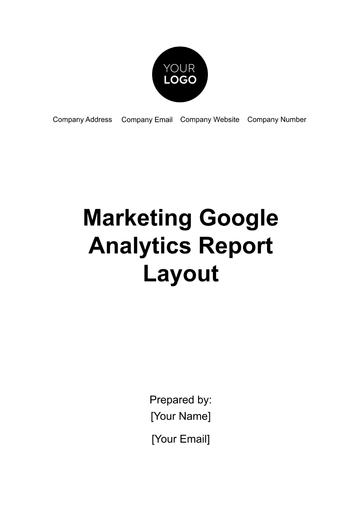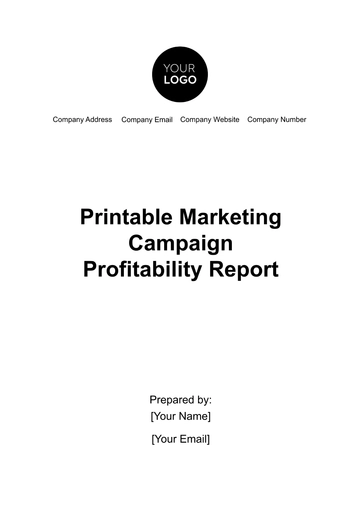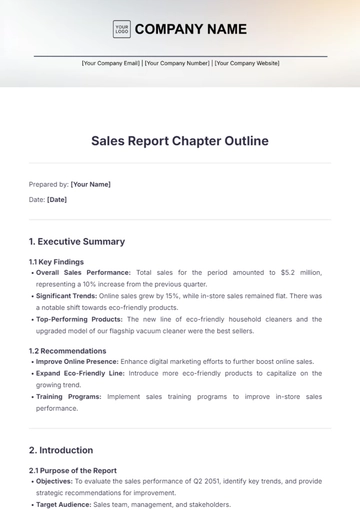Free Marketing Yearly Grants and Sponsorship Report
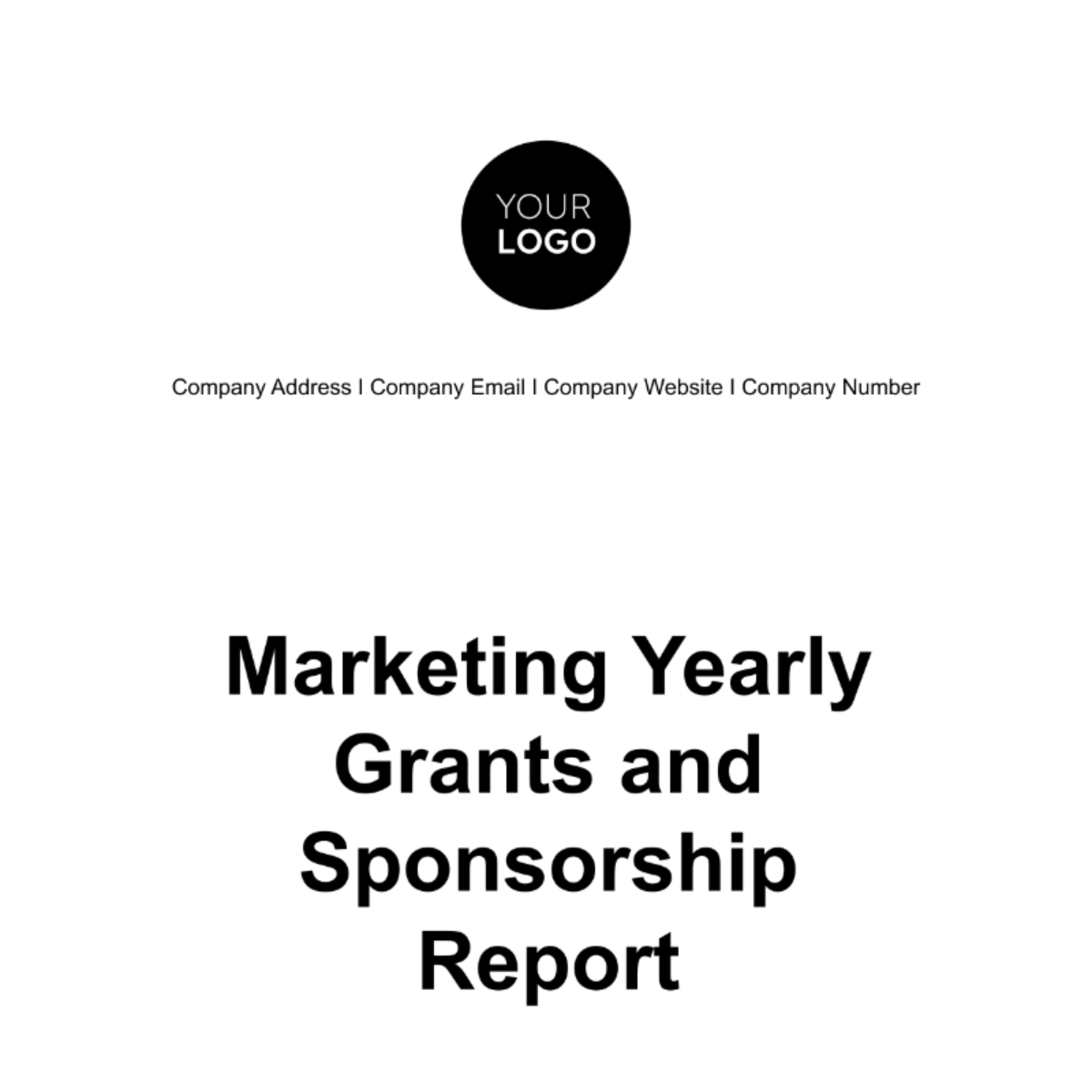
Executive Summary
The Marketing Yearly Grants and Sponsorship Report for [Your Company Name] aims to provide a comprehensive analysis of the financial allocations and their subsequent impact for the fiscal year 2051. A total budget of $2.5 million was allocated, with $1.5 million for grants and $1 million for sponsorships. The report reveals a positive return on investment (ROI) for both grants and sponsorships, standing at 18% and 22%, respectively. Key sectors for grant allocation included healthcare, education, and technology, while sponsorships were primarily focused on conferences, sports events, and music festivals. The allocations led to a 15% increase in brand awareness and a 20% increase in brand visibility.
Introduction
[Your Company Name] has been actively involved in community engagement and brand promotion through various grants and sponsorships. This report serves as a detailed account of the allocations made during the fiscal year 2051. It covers the financial aspects, sectors involved, regional distribution, and the impact generated by these initiatives.
Objectives
The primary objectives of this report are:
To provide a detailed financial account of the grants and sponsorships allocated during the fiscal year 2051.
To evaluate the effectiveness of these allocations in achieving the company's marketing objectives.
To identify areas of improvement and offer actionable recommendations for future grant and sponsorship activities.
Methodology
Data for this report was sourced from multiple channels:
Internal Financial Records: Detailed accounts of all transactions related to grants and sponsorships.
Surveys: Feedback forms were distributed to recipients to gauge the impact of the financial support.
Interviews: One-on-one interviews were conducted with key stakeholders to gather qualitative data.
The collected data was then analyzed using statistical software for quantitative metrics and thematic analysis for qualitative insights.
Financial Overview
A. Total Budget Allocation
The total budget for the year was $2.5 million, divided as follows:
Grants: $1.5 million
Sponsorships: $1 million
B. Expenditure
The actual expenditure was slightly below the allocated budget:
Grants: $1.45 million
Sponsorships: $980,000
C. ROI Analysis
The return on investment for the allocations was as follows:
Grants: 18%
Sponsorships: 22%
Funding Sources
A. Internal Funding
A significant portion of the budget, approximately 70%, was sourced from internal revenue streams, including profits and operational budgets.
B. External Funding
Around 20% of the budget was acquired through external partnerships and collaborations.
C. Government Grants
The remaining 10% was supplemented by government grants aimed at community development and social responsibility.
Allocation Criteria
A. Needs Assessment
A comprehensive needs assessment was conducted to identify the sectors and events that would benefit most from the funding.
B. ROI Potential
Projects and events with a high potential for positive ROI were given priority in the allocation process.
C. Strategic Alignment
The alignment of the project or event with [Your Company Name]'s strategic goals was another critical factor in the allocation decision.
Approval Process
A. Preliminary Screening
All applications for grants and sponsorships underwent a preliminary screening to assess their eligibility based on predefined criteria.
B. Committee Review
A specialized committee reviewed the shortlisted applications, evaluating them on various parameters such as impact potential, alignment with company objectives, and financial feasibility.
C. Final Approval
The final decision on the allocations was made by the executive board, post a thorough review of the committee's recommendations.
Grant Allocation
A. By Sector
The grants were distributed across five key sectors:
B. By Region
Geographically, the grants were allocated as follows:
Sponsorship Allocation
A. By Event Type
The sponsorships were categorized based on the type of event:
B. By Impact
The sponsorships were also categorized based on their expected impact:
Impact Assessment
A. Grants
The grants led to the following impacts:
15% increase in brand awareness
Formation of 20 new partnerships
10% increase in customer loyalty
B. Sponsorships
The sponsorships resulted in:
20% increase in brand visibility
Generation of 30 new business leads
25% increase in social media engagement
Case Studies
A. Healthcare Grant to [Hospital Name]
Objective: To increase brand awareness among healthcare professionals.
Allocation: $100,000
Impact: The grant led to a 20% increase in brand recognition among local healthcare providers.
B. Sponsorship of [Festival Name]
Objective: To increase social media engagement among millennials.
Allocation: $50,000
Impact: The sponsorship resulted in a 30% increase in social media mentions and shares.
Challenges and Limitations
A. Budget Constraints
While the allocated budget was mostly sufficient, there were instances where additional funding could have amplified the impact. For example, the sponsorship for [Festival Name] could have included a larger interactive booth with the availability of more funds.
B. Regulatory Hurdles
Certain grants, especially those directed towards healthcare and education, faced regulatory challenges that delayed the disbursement of funds.
C. Data Collection
Although extensive efforts were made to collect comprehensive data, there were limitations in obtaining feedback from all recipients, which may affect the accuracy of the impact assessment.
Future Outlook
A. Budget Increase
Given the positive ROI and impact metrics, there is a proposal to increase the budget for grants and sponsorships for the next fiscal year by 10%.
B. New Sectors and Geographies
Exploration into new sectors such as renewable energy and new geographies like South America is under consideration for the next fiscal year.
C. Technology Integration
Plans are underway to integrate advanced data analytics tools to better track and measure the impact of each grant and sponsorship.
Recommendations
Based on the analysis, the following recommendations are made:
Increase the grant allocation for the healthcare sector due to its high ROI.
Explore sponsorship opportunities in emerging markets to diversify impact.
Implement a quarterly review mechanism to assess the ongoing impact of the allocations.
Conclusion
The grants and sponsorships allocated by [Your Company Name] for the fiscal year 2051 have been effective in achieving the set objectives. The positive ROI and impact metrics indicate the success of these initiatives. The report suggests continued investment in these areas for future growth and brand development.
Appendices
Appendix A: Financial Statements
Detailed financial statements showing the allocation and expenditure for each grant and sponsorship.
Appendix B: Survey Results
Complete results of the surveys conducted among grant and sponsorship recipients.
Appendix C: Interview Transcripts
Transcripts of interviews conducted with key stakeholders involved in the grant and sponsorship programs.
For further information, please contact [Your Name] at [Your Email].
[Your Company Name]
[Your Company Address]
[Your Company Number]
[Your Company Website]
[Your Company social media]
- 100% Customizable, free editor
- Access 1 Million+ Templates, photo’s & graphics
- Download or share as a template
- Click and replace photos, graphics, text, backgrounds
- Resize, crop, AI write & more
- Access advanced editor
Track grants and sponsorships effectively with our Marketing Yearly Grants and Sponsorship Report Template, available on Template.net. Tailored with industry keywords, this editable document simplifies communication. Utilize our AI Editor Tool for seamless customization, ensuring precise reporting of funding sources. Elevate your marketing strategy with this comprehensive template designed for thorough financial tracking.
You may also like
- Sales Report
- Daily Report
- Project Report
- Business Report
- Weekly Report
- Incident Report
- Annual Report
- Report Layout
- Report Design
- Progress Report
- Marketing Report
- Company Report
- Monthly Report
- Audit Report
- Status Report
- School Report
- Reports Hr
- Management Report
- Project Status Report
- Handover Report
- Health And Safety Report
- Restaurant Report
- Construction Report
- Research Report
- Evaluation Report
- Investigation Report
- Employee Report
- Advertising Report
- Weekly Status Report
- Project Management Report
- Finance Report
- Service Report
- Technical Report
- Meeting Report
- Quarterly Report
- Inspection Report
- Medical Report
- Test Report
- Summary Report
- Inventory Report
- Valuation Report
- Operations Report
- Payroll Report
- Training Report
- Job Report
- Case Report
- Performance Report
- Board Report
- Internal Audit Report
- Student Report
- Monthly Management Report
- Small Business Report
- Accident Report
- Call Center Report
- Activity Report
- IT and Software Report
- Internship Report
- Visit Report
- Product Report
- Book Report
- Property Report
- Recruitment Report
- University Report
- Event Report
- SEO Report
- Conference Report
- Narrative Report
- Nursing Home Report
- Preschool Report
- Call Report
- Customer Report
- Employee Incident Report
- Accomplishment Report
- Social Media Report
- Work From Home Report
- Security Report
- Damage Report
- Quality Report
- Internal Report
- Nurse Report
- Real Estate Report
- Hotel Report
- Equipment Report
- Credit Report
- Field Report
- Non Profit Report
- Maintenance Report
- News Report
- Survey Report
- Executive Report
- Law Firm Report
- Advertising Agency Report
- Interior Design Report
- Travel Agency Report
- Stock Report
- Salon Report
- Bug Report
- Workplace Report
- Action Report
- Investor Report
- Cleaning Services Report
- Consulting Report
- Freelancer Report
- Site Visit Report
- Trip Report
- Classroom Observation Report
- Vehicle Report
- Final Report
- Software Report
